archiemcphee: Because we're still completely blown away, even...
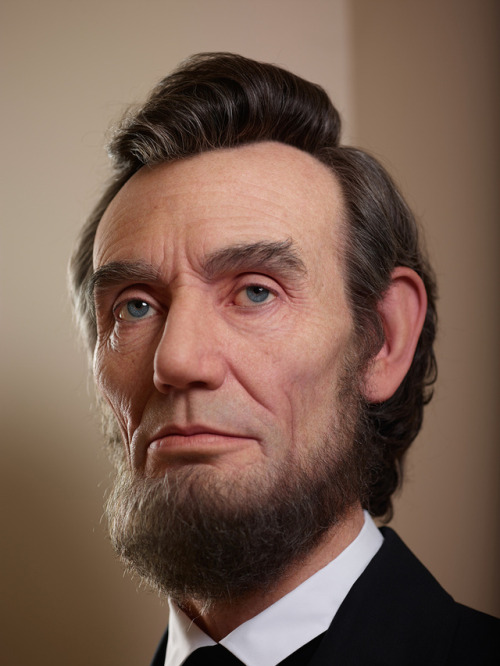
Because we're still completely blown away, even after our first post about it 4 months ago, here's a slightly different look at veteran Hollywood special effects artist Kazuhiro Tsuji's incredibly awesome bust of Abraham Lincoln.
The 45-inch-tall, silicone sculpted, mixed media bust, simply entitled Lincoln, was shown at the Conjoined III: The Final Chapter group exhibition at CoproGallery, curated by artist Chet Zar.
[via Kotaku]
Green-Wood Cemetery: Rows of New Markers, and Untold Sacrifice...
Green-Wood Cemetery: Rows of New Markers, and Untold Sacrifice by Civil War Soldiers
The effort began in 2002, with the restoration and rededication of the massive 1869 Civil War Soldiers' Monument on the cemetery's promontory, Battle Hill, bringing together dozens of volunteers. "We discussed it and came to a conclusion: Let's see if we can find all the Civil War dead at Green-Wood," said Jeff Richman, the cemetery's historian.
"This is a work of historical rescue," said one of the volunteers, Jeffrey Blustein, a medical ethicist at Albert Einstein College of Medicine in the Bronx. "History isn't just about the rich and famous, it's about all the forgotten people, ordinary people who otherwise would never be known."
Many grave markers were believed to be missing until a team of cemetery workers began using metal rods to probe the greens. "We found stone after stone that had sunk below the grass line," Mr. Richman said. "The gravestones make a pinging sound."
Flag of the Brown Mountain Boys North Carolina Local women in...
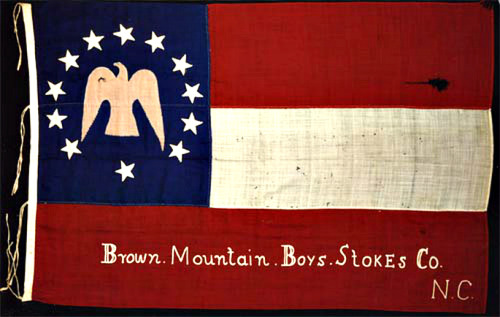
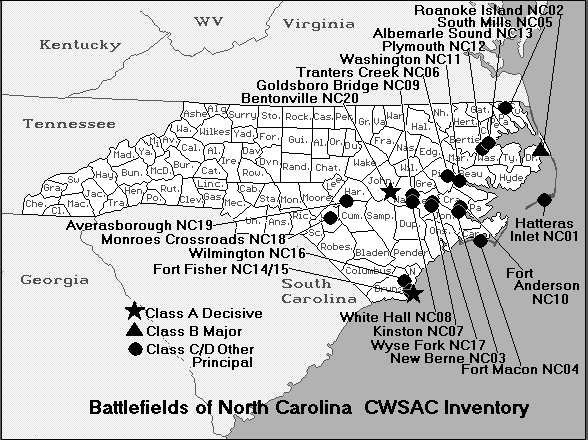
http://thomaslegion.net/2nd.html
Inmate at Alabama's Confederate Soldiers Home Photographs...
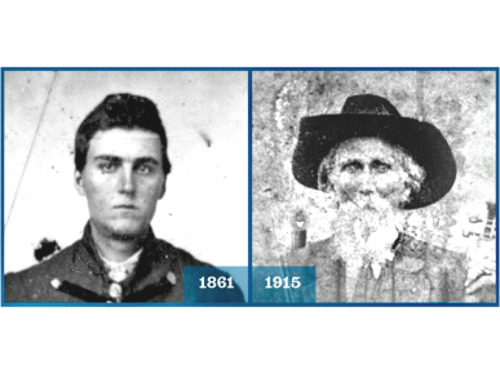
Inmate at Alabama's Confederate Soldiers Home
Photographs of Pvt. John S. Tucker taken in 1861 and 1915. Tucker served in the Confederacy's Twenty-ninth Alabama Infantry during the Civil War and became an "inmate" of the Alabama Confederate Soldiers Home late in life. He died at the home in 1916 and is buried on the grounds of Confederate Memorial Park in Cemetery #2.
Alabama Department of Archives and History
George N. Wise, a native of Alexandria, Va. enlisted in Company...


George N. Wise, a native of Alexandria, Va. enlisted in Company H (Old Dominion Rifles) 17th Virginia Infantry on April 17, 1861.
He served as a corporal and later as a sergeant. Following is how he describes the Battle of Fredericksburg in his diary.
Saturday 13th Dec. Very foggy until noon and few shots up to this time, but since the fog has cleaned away the guns have opened on right and left and a heavy battle is in progress, I see the enemy in lines from four or five deep advancing upon us men in a strip of woods they draw near and fire a volley the smoke clears up then a blue curl of smoke rises from the woods like chaff before the wind they flee. The artillery opens and the air is filled with smoke, shell, and shot horses without riders come galloping out of the cloud men limping and running hatless and most of them gunless fall back a new line comes in and like the first it melts before the galling fire of Hood's Texans.
Rare Book, Manuscript, and Special Collections Library Duke University
The Civil War and American Art- May 27–September 2,...

The Civil War and American Art- May 27–September 2, 2013-Metropolitan Museum of Art
Photo: Private Gid White, Company F, 108th Regiment, U.S. Colored Infantry, 1865-
Throughout the four-year war, photography studios in the North and the South accommodated a wounded populace seeking solace and an escape from the psychic threat caused by the turmoil of the times and the instability of the culture. What is uncertain is whether the desire to sit for a portrait was driven primarily by the hope that the little photograph might help the subject and family survive the war or by the fear that the sitters and their relatives would not live through the next battle. Regardless, the belief in the power of the photographic image during this period is astounding and comes across in the faces of privates and officers alike, Confederates and Unionists, men and women.
http://metmuseum.org/exhibitions/listings/2013/civil-war
Private James House with Fighting Knife, Sixteenth Georgia...

Private James House with Fighting Knife, Sixteenth Georgia Cavalry Battalion, Army of Tennessee
This portrait of a cavalryman is an excellent example of a well-armed Confederate soldier. Private House wears a slouch hat and a checked battle shirt seen through the gaps in a modified woolen shell jacket with tabbed button closures. He brandishes his fighting knife and for quick use has half removed a pocket revolver from its belted holster. Perhaps the most frightening weapons in House's personal arsenal may be his focused stare and his set jaw. Credit Metropolitan Museum of Art
Frances Clalin Clayton, 1864-66 CREDIT: Metropolitan Museum of...

Frances Clalin Clayton, 1864-66
CREDIT: Metropolitan Museum of Art/Samuel Masury
Frances Clalin known by her married name of Frances Clayton, was a woman who disguised herself as a man in order to fight in the American Civil War. She served in the Missouri artillery and cavalry units for several months.
Frances is known to have fought in the Battle of Fort Donelson in Tennessee, February 13, 1862, where the Union won after three days of fighting. During this battle Frances was wounded, but was not discovered because of her injury. It wasn't extremely hard for Frances to convincingly play the part of Jack Williams. She was tall and masculine, and had tan skin. She had also worked on perfecting manly activities such as smoking, drinking, chewing tobacco, swearing and gambling. Frances was quite fond of cigars as well. By doing these things, Frances increased her manly character so that she would fit in and others wouldn't see past her disguise.
Frances was engaged in seventeen battles other than Fort Donelson, including the Battle of Murfreesboro December 31, 1862, where her husband died. The Battle of Murfreesboro was referred to as Stones River by the Union. Elmer was only a few feet in front of Frances when he died, but she didn't stop fighting. She stepped over his body and charged when the commands came.
http://arkansastoothpick.com/2008/04/frances-clalin-aka-jack-williams/
Camp Brightwood near Washington, 1862 CREDIT: Metropolitan...

Camp Brightwood near Washington, 1862
CREDIT: Metropolitan Museum of Art/Mathew B. Brady
Camp Sprague, First Rhode Island Regiment, Company D, before...

Camp Sprague, First Rhode Island Regiment, Company D, before July 16, 1861
CREDIT: Metropolitan Museum of Art/Mathew B. Brady
Remembering Those Who Came Before-Civil War Veterans at the 50th...

Remembering Those Who Came Before-Civil War Veterans at the 50th Gettysburg Reunion
Time, We Think, Lends Perspective to the Way in Which We Consider Historical Events~
The passing of years helps us to understand what it was that happened long ago — as we could not when we were caught up in all its immediacy. Much as an artist is able to do when he distances himself from the familiar, so time enables us to look back at what once confused us, until all becomes clear. They are blessings that have devolved to us because brave men and women argued for them, fought for them, died for them. Liberty and peace do not just happen. We do well to honor their memory. Credit-Michael Elliott
http://www.time.com/time/magazine/article/0,9171,1549274,00.html
Photo: Smithsonian
You deserve so much more notes than you get. I have immense respect for you for keeping the memories of these fallen heroes alive.
Thanks for the message, appreciate that, Happy Memorial Day.
Vintage Post Card, Civil War Veterans Home...
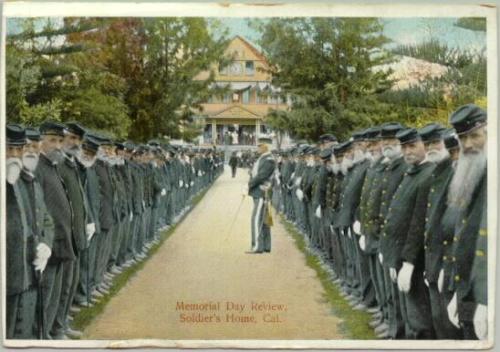
Vintage Post Card, Civil War Veterans Home California
"Nor shall their story be forgot, While Fame her record keeps."
The first Veterans Home in California was established in 1884 for Civil War veterans.
http://www.usmemorialday.org/images/cards/
A Smile Frozen in Time -Unidentified photographer- Two officers...
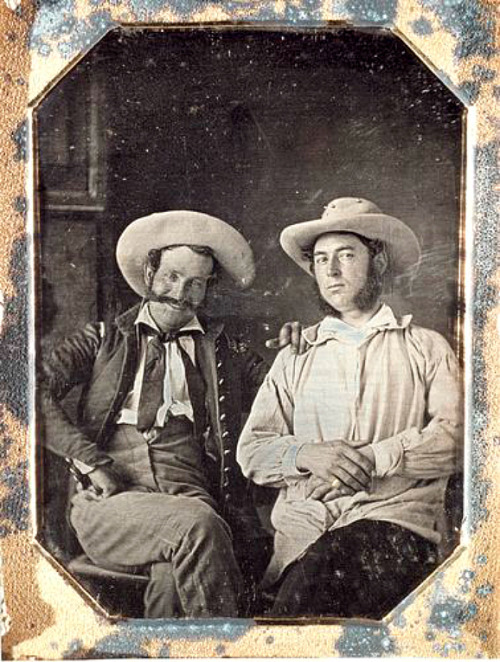
A Smile Frozen in Time -Unidentified photographer- Two officers of the 5th U.S. Infantry taken in Vera Cruz, Mexico 1847, April.. He retired in the later part of the civil war having fought many battles with gallantry against his former friends and officers..This left him disheartened in his letters home to Annie. Copies of the transcribed journals are now archived at West Point. Daguerreotype, 1/4 plate Private collection of Will Dunniway LL/43483
The officer smiling on the left is Capt. William H. Chapman ( Not William W. Chapman) and the officer to the right is believed to be Capt. Moses Merrill, killed at Melino del Rey, Mexico, September 1847. 1/4 plate cased (Not original case) with original mat. This daguerreotype has been published in the 1992 Daguerreian Annual on Mexican War daguerreotypes that John Graf edited, and has been published in three histories on the Mexican War, including a special by PBS Television. The military record of Captain Wm. H. Chapman is stellar. Will Dunniway wrote a short bio on him in the Military Image Magazine called "The Fight For The City of Mexico" Issue September-October 1992. Without going over his long and gallant service in the US Army from the horrible battles leading up to the taking of Mexico City and the surrender of Mexico.
Reasons this image is so significant in the history of the Military Ante-Bellum Daguerreotype:
- It is one of only around 50 'documented' images to have surfaced in the country of Mexico during the Mexico War of 1846-48.
- The condition is very good when compared to the abrades and fading of the General Wool and staff daguerreotype images in Mexico.
- The content, smiles, drunken? Over-shirt (Moses Merrill) made with the ribbed linen material sent for the officers to make new shirts after the Monterey Battles. This was sent to Vera Cruz in the spring of 1847. The studio 'cantina' location. The slouch hats, unbuttoned coat and pants which are totally non- regulation for these West Point grads.
- The ID and journals of this Captain W.H. Chapman are compelling historical documents plus the letter that accompanied the images home to Annie by a Lt. Robinson.
- Captain WH Chapman was on the court marshal board for the San Patricio Battn. that mutinied.
- Provenance. It came from Col. W.W. Chapman's family.
Notes prepared with the assistance of Will Dunniway, Matt Isenburg, Dr.William (Bill) Schulz, John McWilliams and Henry Mace.
http://www.luminous-lint.com/app/image/9765359749434835963026257/
Memorial Day-Remembering the Contributions of African American...
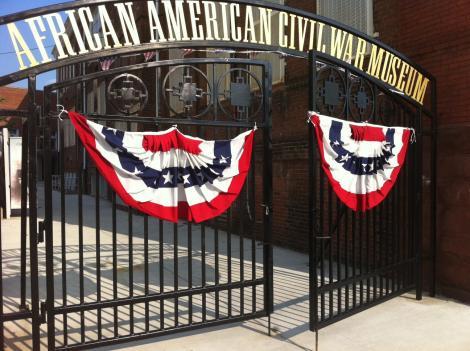
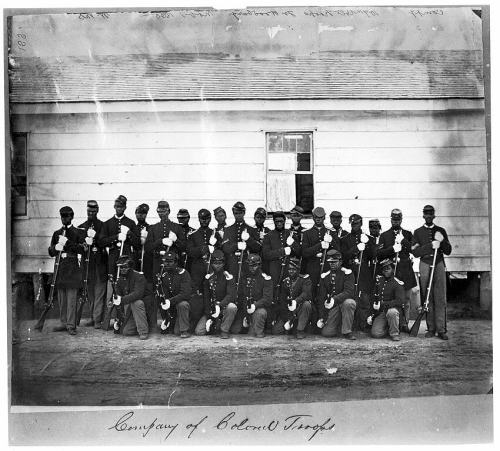

Memorial Day-Remembering the Contributions of African American Soldiers in the Civil War
The largest collection of African American Civil War memorabilia in the country, dedicated solely to African American soldiers who fought for our freedom, and help keep this country united under one flag," says Frank Smith, the museum's founding director.
By the end of the Civil War, roughly 179,000 black men (10% of the Union Army) served as soldiers in the U.S. Army and another 19,000 served in the Navy. Nearly 40,000 black soldiers died over the course of the war—30,000 of infection or disease. Black soldiers served in artillery and infantry and performed all noncombat support functions that sustain an army, as well. Black carpenters, chaplains, cooks, guards, laborers, nurses, scouts, spies, steamboat pilots, surgeons, and teamsters also contributed to the war cause. There were nearly 80 black commissioned officers. Black women, who could not formally join the Army, nonetheless served as nurses, spies, and scouts, the most famous being Harriet Tubman who scouted for the 2d South Carolina Volunteers.
http://www.archives.gov/education/lessons/blacks-civil-war/
http://www.asalh.org/images/AACW_68878_STATUE_FRONT_16X20V4.JPG
Ashes of Soldiers by Walt Whitman (1819-1892) Ashes of soldiers...

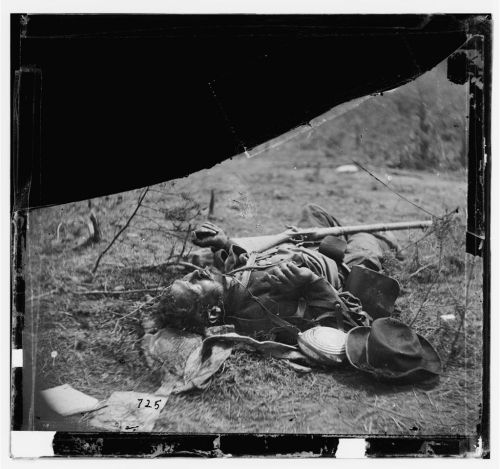
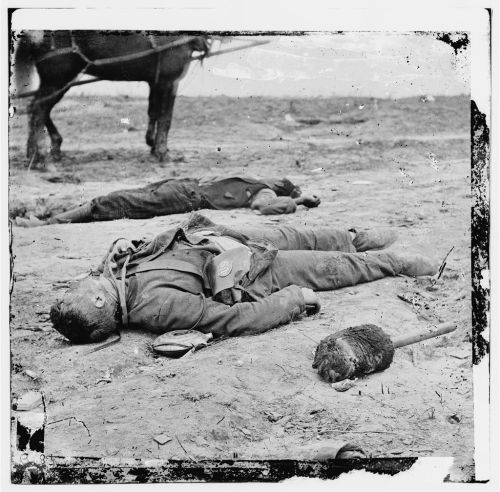
Confederate and Union Dead at Fort Mahone - Petersburg, VA April 1865
Ashes of Soldiers by Walt Whitman (1819-1892)
Ashes of soldiers South or North,
As I muse retrospective murmuring a chant in thought,
The war resumes, again to my sense your shapes,
And again the advance of the armies.
Noiseless as mists and vapors,
From their graves in the trenches ascending,
From cemeteries all through Virginia and Tennessee,
From every point of the compass out of the countless graves,
In wafted clouds, in myriads large, or squads of twos or threes or
single ones they come,
And silently gather round me.
Now sound no note O trumpeters,
Not at the head of my cavalry parading on spirited horses,
With sabres drawn and glistening, and carbines by their thighs, (ah
my brave horsemen!
My handsome tan-faced horsemen! what life, what joy and pride,
With all the perils were yours.)
Nor you drummers, neither at reveille at dawn,
Nor the long roll alarming the camp, nor even the muffled beat for burial,
Nothing from you this time O drummers bearing my warlike drums.
But aside from these and the marts of wealth and the crowded promenade,
Admitting around me comrades close unseen by the rest and voiceless,
The slain elate and alive again, the dust and debris alive,
I chant this chant of my silent soul in the name of all dead soldiers.
Faces so pale with wondrous eyes, very dear, gather closer yet,
Draw close, but speak not.
Phantoms of countless lost,
Invisible to the rest henceforth become my companions,
Follow me ever—desert me not while I live.
Sweet are the blooming cheeks of the living—sweet are the musical
voices sounding,
But sweet, ah sweet, are the dead with their silent eyes.
Dearest comrades, all is over and long gone,
But love is not over—and what love, O comrades!
Perfume from battle-fields rising, up from the foetor arising.
Perfume therefore my chant, O love, immortal love,
Give me to bathe the memories of all dead soldiers,
Shroud them, embalm them, cover them all over with tender pride.
Perfume all—make all wholesome,
Make these ashes to nourish and blossom,
O love, solve all, fructify all with the last chemistry.
Give me exhaustless, make me a fountain,
That I exhale love from me wherever I go like a moist perennial dew,
For the ashes of all dead soldiers South or North.
Memorial Day-Remembering the Children of the Civil War-Famous...

Memorial Day-Remembering the Children of the Civil War-Famous Examples of Children Performing Heroic Deeds During Wartime
Children played a role in the American Civil War. More than 300 Northern Soldiers were under the age of thirteen and a few were under ten.
Albert Munson who was fifteen years old, joined the 23rd Massachusetts with his father. During the battle of Roanoke Island, his father was wounded, but Albert continued to drum, using a pistol for a drum stick. Albert marched right up to the enemy, but was shot and killed.
When Johnny Cook was thirteen years old, he served as a bugler with the 4th U.S. Artillery. Just days after his fifteenth birthday, he was involved in the battle of Antietam. Witnessing the cannoneers struck down in battle, he rushed in and took over operations of the cannon. Fighting off three attacks by the South, Johnny was awarded the Medal of Honor. He later joined the Navy and fought on a gunboat until the end of the war. He lived until 1915.
Two drummer boys from the 10th Connecticut Volunteers were present at the battle of Fort Wagner. They happened upon a Confederate Soldier who attempted to fire at them, but his gun did not go off. One of the boys pointed a scope at him, which he mistook for a pistol and he surrendered. They grabbed his weapon and marched him back to camp, as a prisoner.
Henry Shaler of Indiana captured twenty-five men prisoners at the battle of Gettysburg, more than any other man in the army. He pretended to be a Southern soldier and had the enemy lay down their weapons to help carry wounded. Henry then drew his pistol and marched them all back to his camp.
Robert Henry Hendershot was a drummer boy for the 8th Michigan when his regiment was charged with the duty of laying pontoon bridges across the Rappahannock river during the battle of Fredericksburg. Pinned down by sharpshooters, Robert volunteered for the mission, but was denied. He stowed away, by hanging on the back of the boat. submerged in water. His drum was destroyed, but he picked up a musket and captured one of the Confederate sharpshooters.
Unidentified Soldier Standing with Napoleon Cannon in Front of Encampment Deposit; Tom Liljenquist; 2011; (D 062).Forms part of: Liljenquist Family Collection of Civil War Photographs (Library of Congress). http://library.thinkquest.org/06aug/01591/children-t.html
Women Soldiers of the Civil War-Remembering Women That Served...

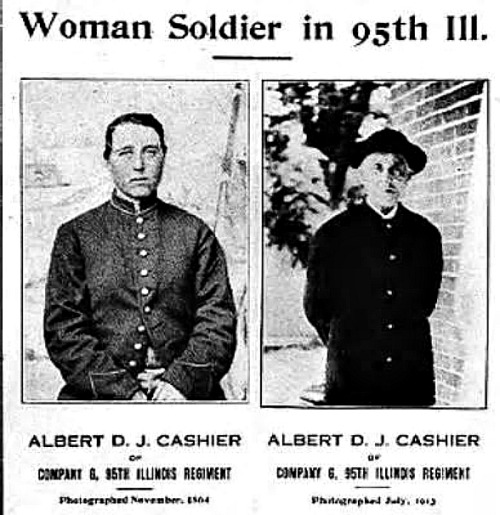
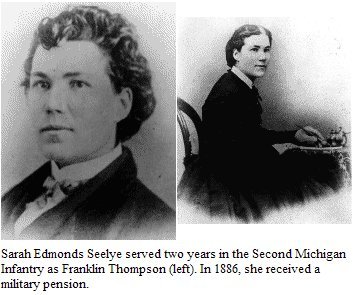
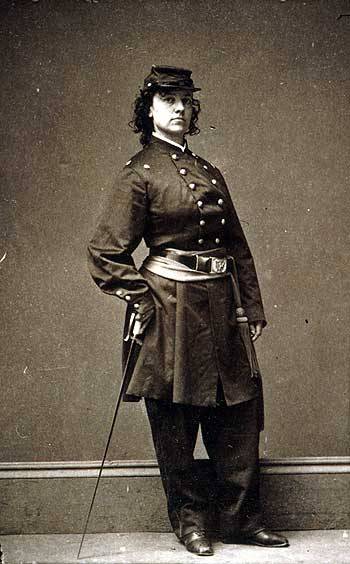
Pauline Cushman, was an American actress and a spy for the Union Army during the American Civil War.

Cathay Williams (September 1844 - 1892) was an American soldier. She is the first African American female to enlist, and the only documented to serve in the United States Army posing as a man under th
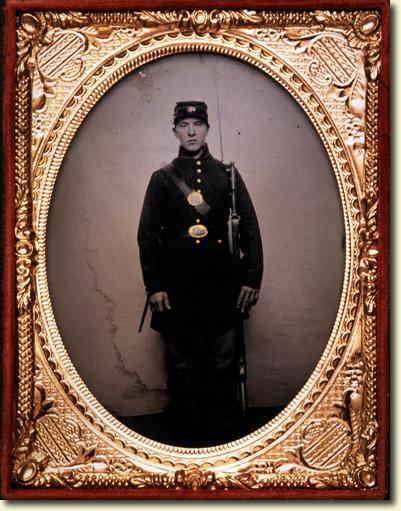
Private Lyons Wakeman, a women whose real name was Sarah Rosetta Wakeman, was stationed in Washington with the 153rd New York Regiment

Frances Clalin Clayton, was a woman who disguised herself as a man named Jack Williams in order to fight for Union forces during the American Civil War.[1] She served in the Missouri artillery and cav
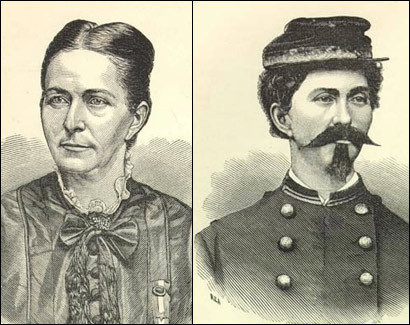
Loreta Janeta Velázquez, was a Cuban-born woman who masqueraded as a male Confederate soldier during the American Civil War. She enlisted in the Confederate States Army in 1861, without her soldier-hu
Women Soldiers of the Civil War-Remembering Women That Served During the Civil War on This Memorial Day
Much of the information available on female Civil War soldiers is found in their obituaries. (NARA, Records of the Adjutant General's Office, 1780's - 1917, RG 94)
Despite the fact that the U.S. Army did not acknowledge or advertise their existence, it is surprising that the women soldiers of the Civil War are not better known today. After all, their existence was known at the time and through the rest of the nineteenth century. Even though some modern writers have considered Seelye and Cashier, the majority of historians who have written about the common soldiers of the war have either ignored women in the ranks or trivialized their experience. While references, usually in passing, are sometimes found, the assumption by many respected Civil War historians is that soldier-women were eccentric and their presence isolated. Textbooks hardly ever mention these women.
In 1862, at least four women, including Sarah Edmonds Seelye, converged on Antietam, Maryland. With more than 30,000 casualties, September 17 was the single bloodiest day of the Civil War. (NARA, 165-SB-19)
http://www.archives.gov/publications/prologue/1993/spring/women-in-the-civil-war-3.html
Memorial Day- Remembering Captain Lowrie Captain Houston B....
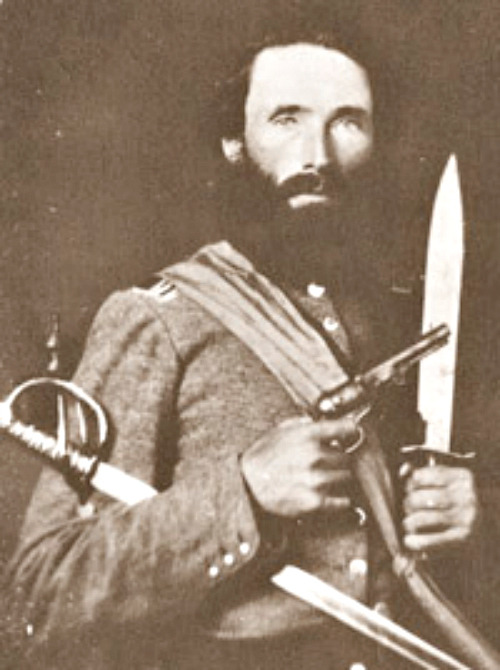
Memorial Day- Remembering Captain Lowrie
Captain Houston B. Lowrie, 6th North Carolina State Troops, Killed in Action, Sharpsburg, Maryland (Battle of Antietam), September 17, 1862
40,000 North Carolinians died in the Civil War
http://www.nccivilwar150.com/features/nc-civil-war_death-study.htm
Civil War Veteran, Pennsylvania, 1935, To have had a seat at the...

Civil War Veteran, Pennsylvania, 1935, To have had a seat at the foot of this man…
The Civil War proved divisive long after the last drop of blood was shed. By 1890 all of the northern states celebrated the holiday at the end of May, but southerners honored their dead on different dates until after World War I—when the holiday lost its connection to Civil War soldiers only and became a way to honor all military lives lost.
The Civil War veteran above wears the cap of the Grand Army of the Republic (GAR)—the largest Union veterans' organization—founded in 1866. The number on his cap signals that his post was 139, located in Scranton, Pennsylvania.
This prize-winning amateur photograph from the 1935 Newspaper National Snapshot Awards was taken by Mrs. Nathan Klein of Wyoming, Pennsylvania. The note on the back reads: "Old soldier talking to bootblacks."
Credit to —Johnna Rizzo














No hay comentarios:
Publicar un comentario